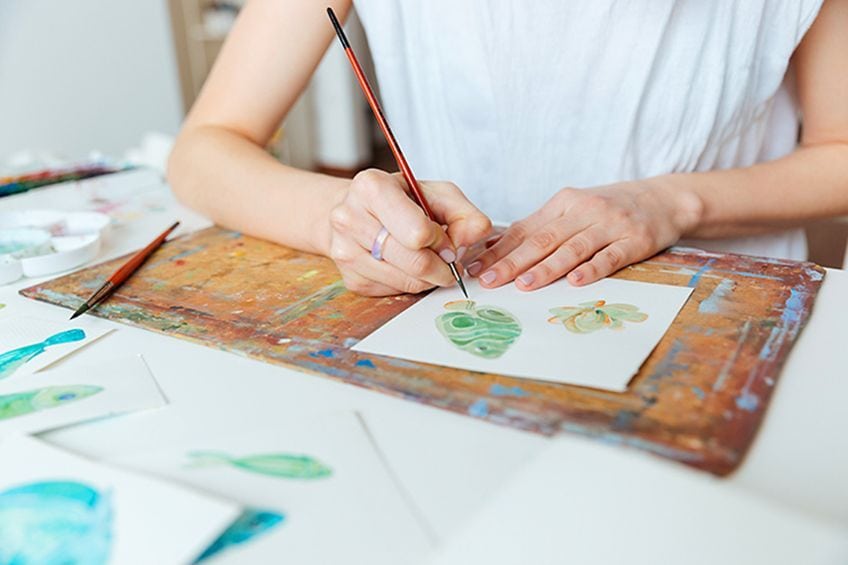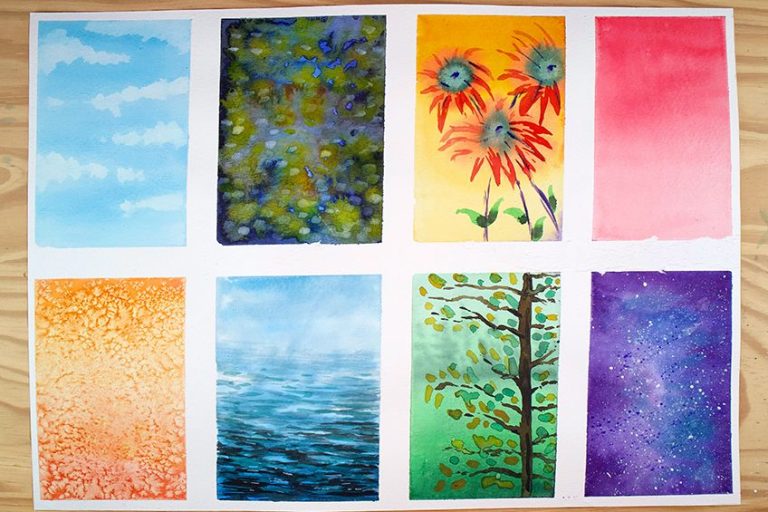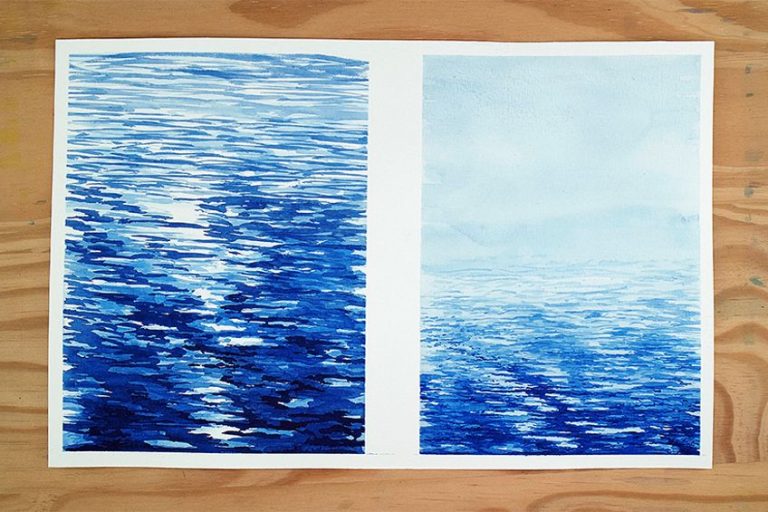How to Stretch Watercolor Paper – Painting Paper Preparation
Have you ever watched a watercolor artist doing their thing? Their painting is complete, but you are curious why they felt the need to stretch the paper they painted, and by stretching, we meant that weird way they kept the paper from curling inward as it dries. Today’s tutorial is all about how to stretch watercolor paper, including how to stretch watercolor paper with masking tape. We will include what the wetting paper process entails, as well as what watercolor tape could be used for besides keeping the paint from certain spaces of your painting. Keep reading for a descriptive guide on stretching watercolor paper. We will explain to you exactly how to prepare the watercolor paper for the stretching process and the various techniques you can use, like using a watercolor stretching board. If you want to learn how to stretch small to large watercolor paper, or any size watercolor sheets, we have explained it all.
Why Do We Stretch Our Watercolor Paper?
There is a very good reason why artists have been stretching watercolor paper after finishing their artwork. It is to prevent the page from curling inwards when the paint dries and to also give you a smooth and flat surface to work on so that the paint does not gather in pools in undesired areas, oversaturating the painting. Large watercolor paper is necessary to stretch because it makes the painting process that much easier for the reasons we have mentioned already.
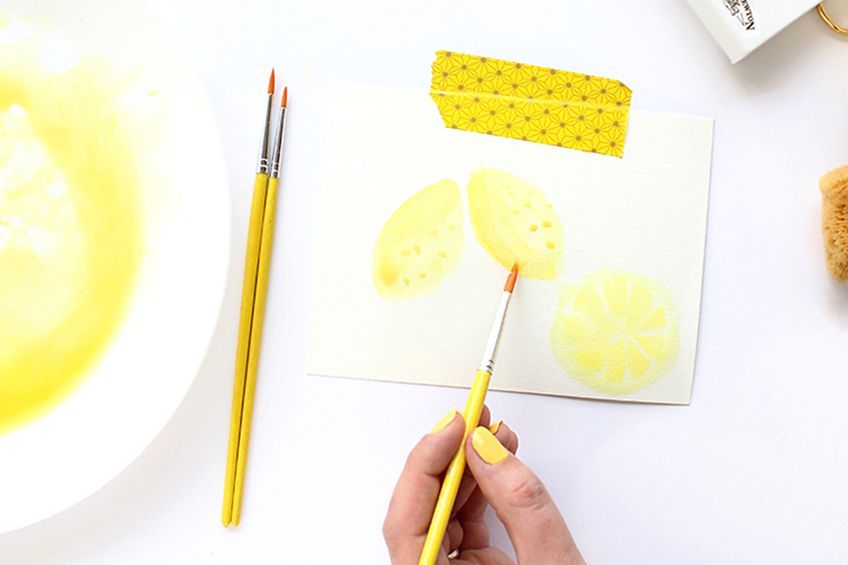
Watercolor sheets of paper are manufactured in such a way that all of the paper fibers are running in the same direction, if not a little bit off from the same direction. When you start painting, and the sheet is saturated with the watery paint, the fibers will not expand regularly, and the warped effect starts showing.
Using a watercolor stretching board to stretch the page before you paint will help to keep the page from expanding and warping in ways you do not want.
Stretching watercolor sheets is done by tightly taping the page onto a watercolor stretching board, or something flat and firm, using watercolor tape, the paper will not buckle, because it will be dry before you take it off the board, and that flat surface it is stuck to, acts like mold to keep your artwork smooth and flat. Here are the two most common reasons why we would recommend stretching the paper for your watercolor artwork:
- If the watercolor paper is lighter than 300 grams; or
- If the sheet you are using is a large piece of watercolor paper.
We have spoken in previous tutorials about watercolor blocks, which are an alternative method for the stretching process, and a little easier, but harder to travel with which is why many artists still go through the effort of stretching their paper. A watercolor block is made up of many watercolor sheets of paper that are set against a board underneath the block, supporting the paper.

Each edge of the stack of paper is covered in a rubbery substance that holds the stack together. The idea is that you paint on the sheet that is visible from the top of the block, then once the painting is fully dry, you can remove the sheet by running a sharp knife around the edge (finding the open slot first to get a good angle to separate the page easier) A fresh sheet will be revealed underneath the page you just painted on. Watercolor blocks are not the most ideal option to use for stretching your watercolor sheet, especially if you are on a budget, because the block can be costly, not to mention cumbersome to carry around with you.
This is why some artists opt to stretch their watercolor sheets using a stretching board.
How to Stretch Watercolor Paper
Trying to rush through anything is never going to be helpful to you. You will most likely take longer than you would if you just took your time. The same goes for learning how to prepare watercolor paper, or how to stretch watercolor paper. In this next step, we will teach you just that. From the “wetting paper” process to the use of watercolor tape. We will also include how to stretch watercolor paper with masking tape, or painter’s tape, and what happens if you use a hairdryer to speed up the process.
The Wetting Paper Process
The name of this first step is what gives it away. Yep, you are right, it means you are required to wt the paper or soak it rather.
You can dab a wet sponge over the surface, or you can dunk it underwater gently, ensuring the whole page is wet.
Spraying, Sponges, and Brushes
As we said, you have the option to use a sponge, a cloth, or even a paintbrush that is clean, to wet the paper. Dip your choice of wetting item and then run it over the paper’s surface. Make sure you wet both sides because this method will not get through to both sides.

Fully Immersing the Paper in Water
This step is a little quicker than trying to wet the sheet with a cloth or a sponge, but you will need a suitably sized bowl or a Tupperware that will fit the whole sheet you are wetting without bending the page. All that you need to do is hold the top two corners of the sheet, and drag the paper through the water, without lingering too long in water.
If you need to, you can repeat this process until it is wet enough.
Recommended Soaking Times
To prevent any issues later on, make sure the paper is well soaked. It is important to remember that when the paper is over soaked, or oversaturated, the fibers will expand considerably, and then contract when it is dried, making the paper fragile, and prone to tearing. Under-soaking the paper enough, the paper will appear flat and rigid on the surface; however, as soon as you begin painting, the paper will warp regardless. When the paper begins to appear or feels limp, you should remove it from the water, usually after at least ten seconds.

Of course, the paper you choose to stretch should be top quality, or something similar. As a rule of thumb, the thicker the paper, the longer it is going to take to soak it. This means that if the paper you are soaking is 300g, you will need at least five minutes, and any paper that is thicker or heavier can be soaked up to about 10 minutes. Just keep an eye on your page.
Stretching the Watercolor Paper
The board that you use for the stretching should be at least an inch larger than the size of the paper. This is so that you have space for the tape to hold the page down without bending or damaging the paper. Before you begin stretching your watercolor sheets, you will need a few supplies gathered together.
The board for stretching needs to be smooth, or you can paint a primer over the surface to take away some of the absorbent factors.
- Marine-grade plywood
- Canvas
- Paper Stretcher
- Plexiglass
Now attach the paper to the board of your choice, and you can choose one of many methods. It is more common to use gummed tape, an adhesive tape that is water-activated and is easy to remove. If you have a hardy stapler that can handle stapling through the board then stapling the page down is another great option.
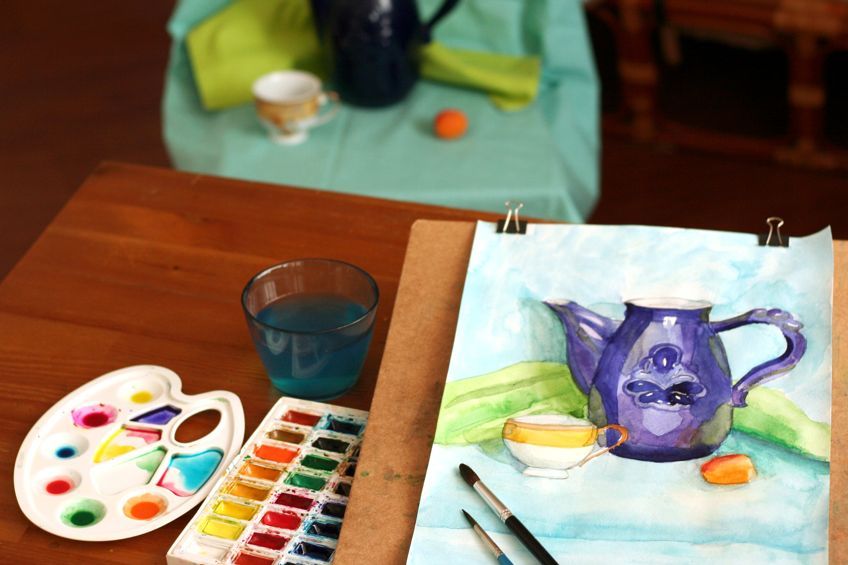
After you have attached the watercolor paper to the watercolor stretching board, you must wait for it to dry completely before you can use it. The best drying place is somewhere warm, but preferably out of direct sunlight because the UV rays will zap the paint’s pigments. If you use a hairdryer, then bear in mind that this will not give you a better result, even if it saves you time. the natural drying process is much better for quality artwork.
Methods of Attaching the Watercolor Paper
You could, in theory, try to attach the watercolor sheet using any means necessary, but the more commonly used method is with tape. Keep reading to learn how to stretch watercolor down and keep it on the board.
Using a Canvas Frame
In order to use this method, you will need a blank canvas. If you have the means, you can either purchase stretcher bars from the art store and assemble the frame from scratch, or you can simply buy a canvas and strip it from the frame after you have bought it. Again, you need to soak the paper in water for a few minutes before placing it on a cotton towel with the watermark facing down. You will need to position the canvas frame so that you can wrap the page around it.
To attach the paper to the frame, you will need to use a stapler, making sure that it is securely attached.
If the paint is dry, it should be left to dry for at least several hours, and it should not be sped up by using a heat source to speed up the process, so no hairdryers this time. Having dried the paper, you should now be able to stretch the canvas so that it is perfectly firm and stretched. Once you have taped around the paper and are ready to begin painting, you can then use the tape to create a half-inch border, which can also be helpful when framing the artwork. When the painting is finished, you are then able to gently pry the staples off, to separate the page from the board.
Using Gummed Tape
Now that you have learned how to prepare a watercolor paper for the stretching part, it is time to learn how to stretch watercolor paper with gummed tape, which is a specially designed tape that is perfect for use with watercolors. This tape is activated by water, so over-soaking the page can cause the glue to dissolve. It is not the same as making tape, so do not confuse one for the other. Gummed tape is a stronger version, making it more efficient when working with watercolor paint. One amazing thing about gummed tape is how it molds with watercolor paper.

Make a border with a pencil around your paper, and make sure it is about half of an inch. This will be the guideline for where to place the tape. Once the page has been taped down on the board you are using to stretch the sheet, then you must lay it somewhere safe for it to dry. This will keep the page from warping or curling inwards, ruining the flush effect of the paper and making the painting process that much harder. When the paper has dried properly, that is a sign that you can take the tape off. Using a palette knife, wedge the tape from the paper. If you try to rip off the tape, you will damage the sheet you want to paint on.
Watercolor Paper Stretcher
If you can afford this method then this is probably one of the better methods for stretching your watercolor paper. For this method, you will need a mallet or a hammer. Place the soaked paper onto the board that has grooves all around the perimeter. There are rubber straps that are placed on top of the paper, and they can be wedged into those grooves with either your hammer or the mallet.
If you are worried about getting the page out again, adding a bit of wax from a candle can help with a bit of grease.
Using Masking Tape
This is where you learn how to stretch watercolor paper with masking tape. Because of how the tape works, you will need to first attach the page to the board with the tape. Then you will get the paper with a sponge. Make sure the paper is sufficiently wet otherwise the stretching will not happen properly.
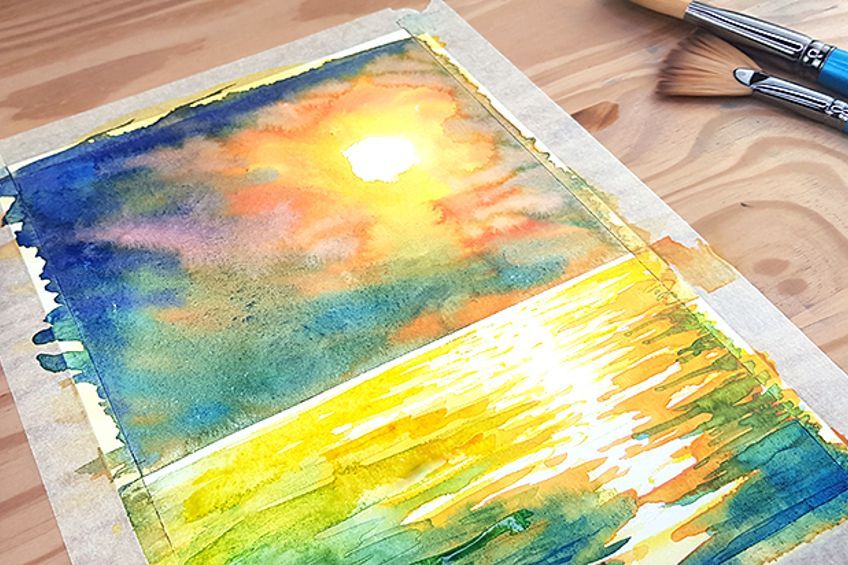
You can then leave the board with the wet page attached in a safe place to dry without any risk of any first falling on the lean and wet surface, or any damage to the page. Remember that an over-saturated page will be risky because it will tear easily. Avoid using a hairdryer because the intense heat might just do the opposite of what you intended for it to do
Can You Flatten a Warped Painting?
It may be the case that you have already finished your painting and did not feel the need to stretch your watercolor paper. Now you are sitting with a painting that has warped slightly because you ignored the stretching process before you began. There may be a way for you to save the painting by following a few simple steps. To begin with, spray a little water on the back of the painting to make it slightly wet, just over damp. Afterward, you will position the board onto two pieces of paper and then put weight onto that stack.
The wights could be books, which will help to keep the age smooth. In all, it might take a few hours to dry.
Final Suggestions For Stretching Watercolor Paper
Stretching your watercolor paper is quite a necessary part of the painting process. If you are new to watercolor art, this might have seemed a bit overwhelming because you thought you could just start painting directly onto the paper. Here are a few final suggestions that you can read for a better idea of how to stretch your watercolor paper.
- It is important not to wet the watercolor tape too much, as this will take away the gum, making it not sticky anymore.
- Wash your hands before you start, to prevent any dirty fingerprints from ruining your clean sheet.
- If you can, try using watercolor tape instead of masking tape for attaching your page to the board.
- Use some books as a weight for extra smooth stretched paper.
- If you use hot water to soak the page, it might shrink. Instead, you should use a sponge soaked in cold water to soak your paper.
- If the page is 300gram in weight, you can soak the page for at least five minutes, and more for heavier pages.
- Find a safe place for the watercolor board for stretching to dry, and avoid using hairdryers.
- You could use a stapler that is strong, rough, or some drawing pins to attach the page to the board.
- If you are using gummed tape to attach the watercolor sheet to the board, you will need to wedge it off gently with a palette knife when the drying time is up. If you pull it off, the paper might tear underneath.
- When wetting the paper, you can either soak the page, or you can use a cloth or a sponge to wet the page.
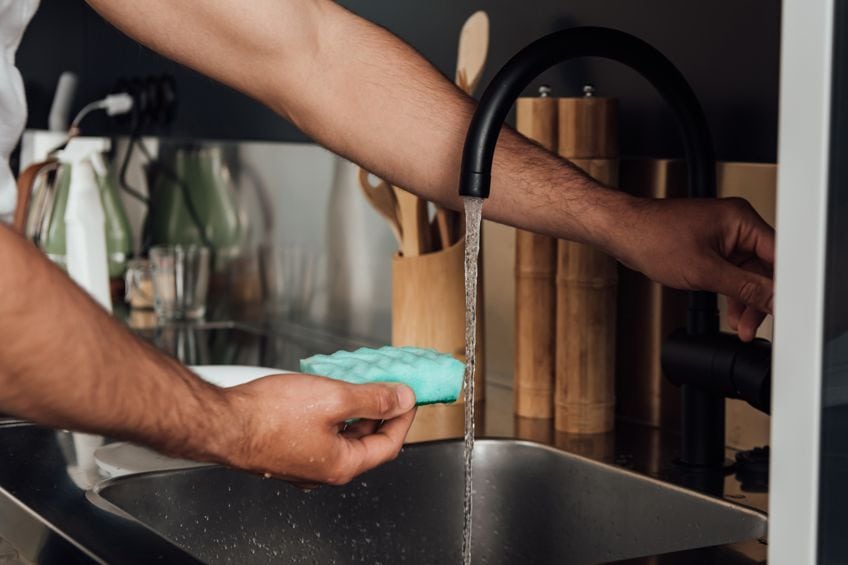
This tutorial is seriously the game changer when it comes to your watercolor artworks, and the professional value they have developed. This means that stretching is not something you should try to avoid unless you are avoiding it by painting on a watercolor block, which makes the stretching process redundant.
Frequently Asked Questions
Do I Need to Stretch Watercolor Paper?
If you are working with large-sized watercolor paper, then it is very necessary to stretch it. This will prevent any warping or curling inwards, and keep your painting flush and even. If you are using a watercolor block, that does the stretching for you, so you will not have to do it beforehand.
What Is the Best Way to Prepare Watercolor Paper?
Preparing the paper you want to paint on with watercolors is getting it ready for the stretching process. This can be done by soaking the upper first, then attaching it to the board, or whatever form of stretching mechanism you prefer.
Do I Need to Soak the Watercolor Paper in Water for a Long Time?
You need not soak the paper for too long. Only five minutes for a paper that weighs about 2300 grams, and up to ten minutes if the paper is heavier. Make sure you are vigilant because oversaturated paper can tear easily.
Can I use Masking Tape for Stretching Watercolor Paper?
We would rather advise using gummed tape because it is specially designed for use with watercolor tape. Masking tape might cause the paper you are painting on to rip, but gummed tape’s adhesive is activated by water, which is one of the main components of watercolor paint.

Demi Bucklow is an independent artist and photographer living in Cape Town, South Africa. Since graduating from the University of Cape Town in 2018 from Michaelis School of Fine Art with a degree specializing in fine art photography, she currently works as a freelance artist, content creator and writer. Demi’s particular interests explore a range of multimedia illustration, collage art, photography and videography, darkroom processing and stop-motion animation. Her work is an exploration of nature and its phenomenon – somewhere between art and space.
Artistic practice presents the ability to communicate a vision. It is through techniques of pointillism and realism that form, and substance are explored as a metaphor for matter; super-imposing a thousand marks and points until an image is formed before our eyes. From illustrations to surrealist landscapes, Demi translates corporeality – mixing the obtuse and vacuous with the astute and expressive which leads to a mixture of irrevocable pondering over what is and what could be.
Learn more about the Art in Context Team.
Cite this Article
Demi, Bucklow, “How to Stretch Watercolor Paper – Painting Paper Preparation.” Art in Context. November 26, 2021. URL: https://artincontext.org/how-to-stretch-watercolor-paper/
Bucklow, D. (2021, 26 November). How to Stretch Watercolor Paper – Painting Paper Preparation. Art in Context. https://artincontext.org/how-to-stretch-watercolor-paper/
Bucklow, Demi. “How to Stretch Watercolor Paper – Painting Paper Preparation.” Art in Context, November 26, 2021. https://artincontext.org/how-to-stretch-watercolor-paper/.


